Safety and Ethics
2.6 Safe Medication Administration
Safe Medication Administration
Since nurses play a pivotal and hands-on role in all aspects of client care, the responsibility of ensuring client safety during medication administration often lies with them. The following sections summarize safety considerations for medication orders, medication administration, assessment/monitoring after medication administration, and documentation.
Safety Considerations – Medication Orders
Medications must be administered in response to an order from a practitioner or on the basis of a standing order that is subsequently appropriately authenticated by a practitioner. All practitioner orders for the administration of drugs and biologicals must include at least the following:
- Name of the client
- Age and weight of the client to facilitate dose calculation when applicable. Policies and procedures must address weight-based dosing for pediatric clients as well as in other circumstances identified in the hospital’s policies. (Note that dose calculations are based on metric weight (kg, or g for newborns)).
- Date and time of the order
- Drug name
- Dose, frequency, and route
- Dose calculation requirements, when applicable
- Exact strength or concentration, when applicable
- Quantity and/or duration, when applicable
- Specific instructions for use, when applicable
- Name of the prescriber
Safety Considerations – Medication Preparation
The following safety considerations were taken from Clinical Procedures for Safer Patient Care by Glynda Rees Doyle and Jodie Anita McCutcheon.[1]
- Plan medication administration to avoid disruption:
- Dispense medication in a quiet area
- Avoid conversations with others
- Follow agency’s no-interruption zone policy
- Prepare medications for ONE client at a time.
- Follow the SEVEN RIGHTS of medication preparation (see below).
- Check that the medication has not expired.
- Perform hand hygiene.
- Check room for additional precautions (contact precautions, droplet precautions, and airborne precautions).
- Introduce yourself to client.
- Confirm client ID using two client identifiers (e.g., name and date of birth) AND check against MAR.
- Check allergy band for any allergies, and ask client about type and severity of reaction.
- Complete necessary focused assessments, lab values, and/or vital signs, and document on MAR.
- Provide client education as necessary.
- If a client questions or expresses concern regarding a medication, stop and do not administer.
Safety Considerations – Medication Administration
The Seven Rights
For the purposes of this textbook, we will discuss the 7 RIGHTS and 3 CHECKS of medication administration. It is important that nurses always follow their hospital and regulatory College policies and guidelines.[2]
7 Rights and 3 Checks of Medication Administration
The 7 RIGHTS are:
- The right patient/client
- The right medication (drug)
- The right dose
- The right route
- The right time
- The right reason
- The right documentation
These RIGHTS must be checked 3 times for each medication the nurse is administering. The 3 CHECKS are done at the following steps in the administration process:
- When the medication is taken out of the drawer
- When the medication is being poured
- When the medication is being put away, or at bedside
Many agencies have implemented bar code medication scanning to improve safety during medication administration. Bar code scanning systems reduce medication errors by electronically verifying the “7 rights” of medication administration. For example, when a nurse scans a bar code on the client’s wristband and on the medication to be administered, the data is delivered to a computer software system where algorithms check various databases and generate real-time warnings or approvals. Studies have shown that bar code scanning reduces errors resulting from the administration of a wrong dose or wrong medication, as well as errors involving medication being given by the wrong route. However, it is important to remember that bar code scanning should be used in addition to performing the 7 rights of medication administration, not in place of this important safety process.
Additionally, nurses should carefully consider their actions when errors occur during the bar code scanning process. Although it may be tempting to quickly dismiss the error and attribute it to a technology glitch, the error may have been triggered due to a client safety concern that requires further follow-up before the medication is administered. It is important for nurses to investigate errors that occur during the bar code scanning process just as they would do if an error is discovered during the traditional five rights of the medication process.
Safety Considerations – Client Education
The BCCNM Practice Standard for Medication states that “nurses educate the client about the medication they receive, including, as applicable:[3]
- the reason the client is receiving the medication,
- the expected action of the medication,
- the duration of the medication therapy,
- specific precautions or instructions for the medication,
- potential side-effects and adverse effects (e.g., allergic reactions) and action to take if they occur,
- potential interactions between the medication and certain foods, other medications, or substances,
- handling and storage requirements,
- recommended follow-up.”
The book Preventing Medication Errors by the Institute of Medicine (2007), lists the following additional key actions to include when teaching clients about the safe use of their medications:
- Clients should maintain an active list of all prescription drugs, over-the-counter (OTC) drugs, and dietary supplements they are taking, the reasons for taking them, and any known drug allergies. Every provider involved in the medication-use process for a client should have access to this list.
- Clients should be provided information about side effects, contraindications, methods for handling adverse reactions, and sources for obtaining additional objective, high-quality information.[4]
Clinical Reasoning and Decision-Making Activity 2.6a
A nurse is preparing to administer metoprolol, a cardiac medication, to a client and implements the nursing process:
ASSESSES the vital signs prior to administration and discovers the heart rate is 48.
DIAGNOSES that the heart rate is too low to safely administer the medication per the parameters provided. Establishes the OUTCOME to keep the client’s heart rate within the normal range of 60-100.
PLANS to call the physician and report this incident in the shift handoff report.
Implements INTERVENTIONS by withholding the metoprolol at this time, documenting the incident of the medication being withheld, and notifying the provider.
Throughout the shift, continues to EVALUATE the client’s status after not receiving the metoprolol.
While providing client teaching to a client about the medication before discharge, the nurse provides a handout with instructions, as well as a list of the current medications.
What other information should be provided to the client?
Note: Answers to the activities can be found in the “Answer Key” sections at the end of the book.
Safety Considerations – Assessment and Monitoring of Clients Receiving Medications
Clients must be carefully monitored to determine whether the medication results in the therapeutically intended benefit, and to allow for early identification of adverse effects and timely initiation of appropriate corrective action. Depending on the medication and route/delivery mode, monitoring may need to include assessment of:
- Clinical and laboratory data to evaluate the efficacy of medication therapy to anticipate or evaluate toxicity and adverse effects. For some medications, including opioids, this may include clinical data such as respiratory status, blood pressure, and oxygenation and carbon dioxide levels.
- Physical signs and clinical symptoms relevant to the client’s medication therapy, such as confusion, agitation, unsteady gait, pruritus, etc.
- Factors contributing to high risk for adverse drug events. Although mistakes may or may not be more common with these drugs, the consequences of errors are often harmful, sometimes fatal, to clients. In addition, certain factors place some clients at greater risk for adverse effects of medication. Factors include, but are not limited to: age, altered liver and kidney function, and drug-to-drug interactions; first-time medication use may contribute to increased risk.
The nurse should consider client risk factors as well as the risks inherent in a medication when determining the type and frequency of monitoring. It is also essential to communicate information regarding the client’s medication risk factors and monitoring requirements during hand-offs of the client to other clinical staff. Adverse reactions such as anaphylaxis or opioid-induced respiratory depression require timely and appropriate intervention per established protocols and should be reported immediately to the practitioner responsible for the care of the client. An example of vigilant post-medication administration monitoring would be for a post-surgical client who is receiving pain medication via patient-controlled analgesia (PCA) pump. Narcotic medications are often used to control pain but also have a sedating effect. Clients can become overly sedated and suffer respiratory depression or arrest, which can be fatal. In addition, the client and/or family members should be educated to notify nursing staff promptly when the client experiences difficulty breathing or other changes that could be a reaction to a medication.[5]
Safety Considerations – Documentation
The BCCNM outlines documentation requirements for registered nurses in the Documentation Practice Standard. Documentation is expected to occur after the actual administration of the medication to the client; advance documentation is not only inappropriate but may result in medication errors. Proper documentation of medication administration actions taken and their outcomes is essential for planning and delivering future care of the client.[6]
Clinical Reasoning and Decision-Making Activity 2.6b
A nurse is preparing to administer morphine, an opioid, to a client who recently had surgery.
- Explain the 7 rights that the nurse will check prior to administering this medication to the client.
- Outline 3 methods the nurse can use to confirm client identification.
- What should the nurse assess prior to administering this medication to the client?
- What should be monitored after administering this medication?
- What should the nurse teach the client (and/or family member) about this medication?
- What information should be included in the shift handoff report about this medication?
Note: Answers to the activities can be found in the “Answer Key” sections at the end of the book.
Putting it all together…
Safe Medication Administration
Now that you have reviewed the safety requirements and understand that safety is a critical component of medication administration, take some time to review this medication administration checklist from Clinical Procedures for Safer Patient Care by Glynda Rees Doyle and Jodie Anita McCutcheon.
This checklist is a useful resource to help you safely administer medications. Consider printing a copy for yourself to take to clinical practice.[7]
Disclaimer: Always review and follow your hospital policy regarding this specific skill. |
|||
Safety considerations:
|
|||
STEPS |
ADDITIONAL INFORMATION |
||
| 1. Check MAR against doctor’s orders. | Check that MAR and doctor’s orders are consistent.
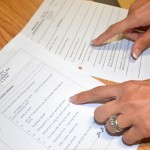 Compare MAR with patient wristband. Night staff usually complete and verify this check as well. |
||
2. Perform the SEVEN RIGHTS x 3 (this must be done with each individual medication):
Medication calculation: D/H x S = A (D or desired dosage/H or have available x S or stock = A or amount prepared) |
The right patient: check that you have the correct patient using two patient identifiers (e.g., name and date of birth).
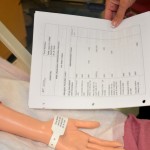 The right medication (drug): check that you have the correct medication and that it is appropriate for the patient in the current context. The right dose: check that the dose makes sense for the age, size, and condition of the patient. Different dosages may be indicated for different conditions. The right route: check that the route is appropriate for the patient’s current condition. The right time: adhere to the prescribed dose and schedule. 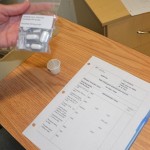 The right reason: check that the patient is receiving the medication for the appropriate reason. The right documentation: always verify any unclear or inaccurate documentation prior to administering medications. NEVER document that you have given a medication until you have actually administered it. |
||
3. The label on the medication must be checked for name, dose, and route, and compared with the MAR at three different times:
|
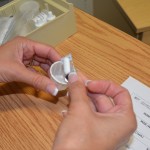 These checks are done before administering the medication to your patient. If taking the drug to the bedside (e.g., eye drops), do a third check at the bedside. |
||
| 4. Circle medication when poured. | Pour medication. Circle MAR to show that medication has been poured.
 |
||
5. Positioning:
|
This ensures patient safety and comfort.
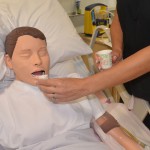 |
||
6. Post-medication safety check:
|
This ensures patient safety.
This step prevents the transfer of microorganisms. 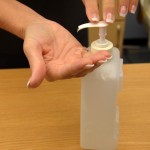 |
||
| Data source: Lilley, Harrington, Snyder, & Swart, 2011; Lynn, 2011; Perry et al., 2014 | |||
- Doyle, Glynda and Jodie McCutcheon. Clinical Procedures for Safer Patient Care. Victoria, BC: BCcampus, 2021. https://opentextbc.ca/clinicalskills/chapter/6-1-safe-medication-adminstration/ ↵
- Doyle, Glynda and Jodie McCutcheon. Clinical Procedures for Safer Patient Care. Victoria, BC: BCcampus, 2021. https://opentextbc.ca/clinicalskills/chapter/6-1-safe-medication-adminstration/ ↵
- BCCNM (2021). Medication: Practice Standard for Registered Nurses - Applying the principles to practice. https://www.bccnm.ca/RN/PracticeStandards/Pages/medication.aspx ↵
- Institute of Medicine. (2007). Preventing medication errors. The National Academies Press. https://doi.org/10.17226/11623 ↵
- U.S. Department of Health & Human Services, Centers for Medicare & Medicaid Services. (2014). Memo: requirements for hospital medication administration, particularly intravenous (IV) medications and post-operative care of patients receiving IV opioids. https://www.cms.gov/Medicare/Provider-Enrollment-and-Certification/SurveyCertificationGenInfo/Downloads/Survey-and-Cert-Letter-14-15.pdf ↵
- BCCNM. (2021). Practice Standards - Documentation. https://www.bccnm.ca/RN/PracticeStandards/Pages/documentation.aspx ↵
- Doyle, Glynda and Jodie McCutcheon. Clinical Procedures for Safer Patient Care. Victoria, BC: BCcampus, 2021. https://opentextbc.ca/clinicalskills/chapter/6-1-safe-medication-adminstration/ ↵
Standards of Practice that include Assessment, Diagnosis, Outcome Identification, Planning, Implementation, and Evaluation components of providing patient care.

